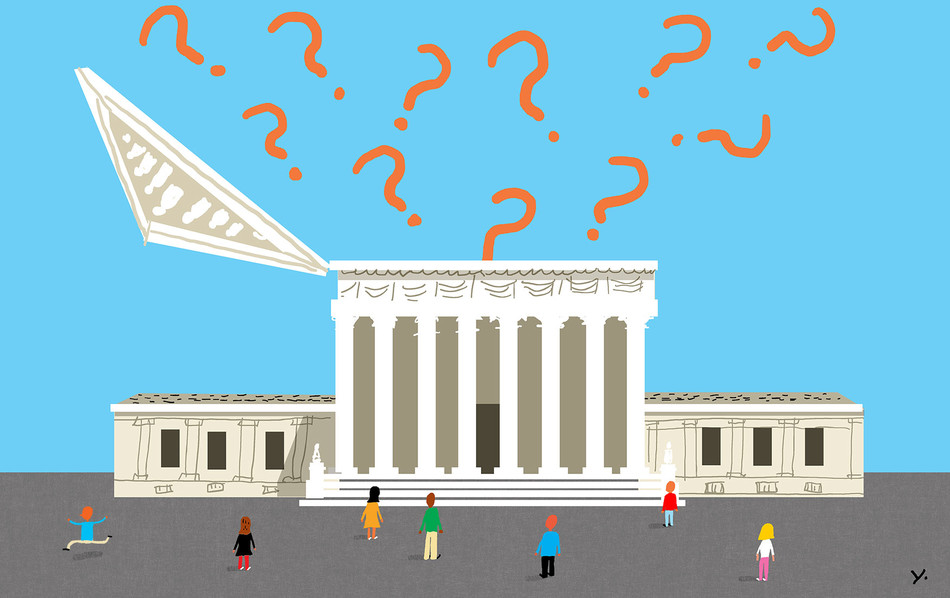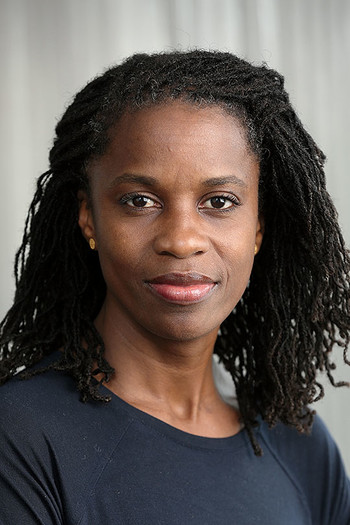From her office in Jerome Greene Hall on the Morningside campus, Olatunde Johnson, a Columbia law professor who once clerked for Justice John Paul Stevens, surveys the legal landscape in the wake of the Supreme Court’s 6–3 decision in Dobbs v. Jackson Women’s Health Organization and sees only chaos.
“There will not be an end to the legal challenges or political contestation over abortion anytime soon,” says Johnson, who with other Columbia scholars has been speaking to the media, helping the public make sense of the legal earthquake in which the constitutional right to an abortion has been reversed and the matter returned to the states, which can restrict abortion in any way they see fit. “There are still many questions unanswered: Can a state with an abortion ban prevent its citizens from traveling to another state for an abortion? Can it effectively criminalize abortion in other states? What’s the role of the federal government? Is there any limit on a state’s ability to prevent a woman from accessing an abortion that might impact her health? There is a lot of uncertainty at every level.”
Johnson is particularly struck by the confusion at the state level over how to manage miscarriages, which involve the same medications and procedures as those used to induce abortions. “This is threatening women’s health,” she says. The Supreme Court’s decision will impact everyone who can get pregnant and can give birth.”
In an office two floors above Johnson, another professor, Carol Sanger, has also been sharing her expertise with the public. Sanger was a law student in 1973 when the conservative Burger court decided Roe v. Wade, ruling 7–2 that state bans on abortion were unconstitutional. Nearly fifty years later, Sanger, whose 2017 book About Abortion: Terminating Pregnancy in Twenty-First-Century America argues that American law and culture shame and stigmatize women who seek abortions, decries the ongoing efforts to eradicate what she considers a critical and hard-earned right.
“People should be terrified right now,” she says, noting a flurry of post-Dobbs legislative proposals that exclude exceptions for rape or incest. “There’s talk about Congress, should Republicans win in November, passing a federal law that says the fetus is a person, which would make all abortions murder.” Sanger contrasts this with pre-Roe laws: “The thought in the early days was: if you have unwanted sex and get pregnant, we’re not going to make you deliver that child. This was considered a humane gesture. But now the court and legislatures have been very clear: it’s all about the fetus.”
The constitutional basis for the Roe decision, explains Sanger, was the right to privacy, derived from the First, Fourth, Fifth, and Ninth Amendments, as well as the due-process clause of the Fourteenth Amendment (“… nor shall any State deprive any person of life, liberty, or property, without due process of law”). That right has been used to protect the use of contraception (1965), interracial marriage (1967), same-sex intimacy (2003), and same-sex marriage (2015). “Although the word ‘privacy’ is not in the Constitution, the concept of privacy is,” Sanger says. “The idea is to protect citizens from intrusion by the state into their deeply personal domains.”
One critic of the “right to privacy” grounding of Roe was Ruth Bader Ginsburg ’59LAW, ’94HON, who was an associate justice from 1993 until her death in 2020, when she was replaced by Amy Coney Barrett, who along with Justice Neil Gorsuch ’88CC voted with the Dobbs majority.
But Ginsburg’s misgivings were entirely different from those articulated by Justice Samuel Alito, who, writing for the majority in Dobbs, rejected the claim to a constitutional right to privacy. Ginsburg, fiercely pro-choice, believed in privacy rights but felt that a divided public would have better digested Roe had it been couched in the Fourteenth Amendment’s equal-protection clause (“… nor deny to any person within its jurisdiction the equal protection of the laws”). “That would have made abortion a matter of gender equality rather than privacy,” Sanger says. “The equal-protection argument was that men and women create pregnancies together but the bulk of the consequences fall on the woman. That’s what Ginsburg had in mind. Yet in Dobbs, Alito dismisses not just the privacy and liberty arguments but also the equal-protection argument.”
As Olatunde Johnson adds, the court also dismissed the question of reliance, which it was obliged to consider: have people come to rely on the right to an abortion in structuring their lives? The court said no.
“The 1992 case that reaffirmed Roe, called Planned Parenthood v. Casey, spoke a lot about reliance on this right,” Johnson says. “Dobbs is striking for not accepting that there has been such a reliance. The court really walked away from that.”
In the near future, Johnson says, courts will have to confront abortion-related challenges to freedom of speech (can states ban websites that give instructions on how to get an abortion?), freedom of religion (what if you don’t believe life starts at conception?), the right to travel between states, and the right to lifesaving health care.
“So legally this isn’t over,” Johnson says. “There will be questions that make it back up to the Supreme Court.”
This article appears in the Fall 2022 print edition of Columbia Magazine with the title "Supreme Complications."





